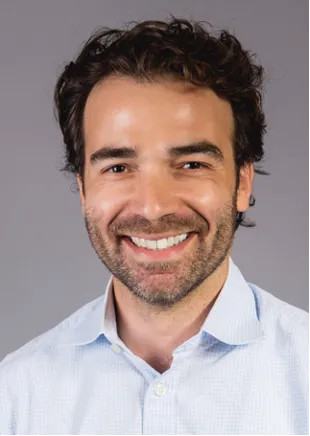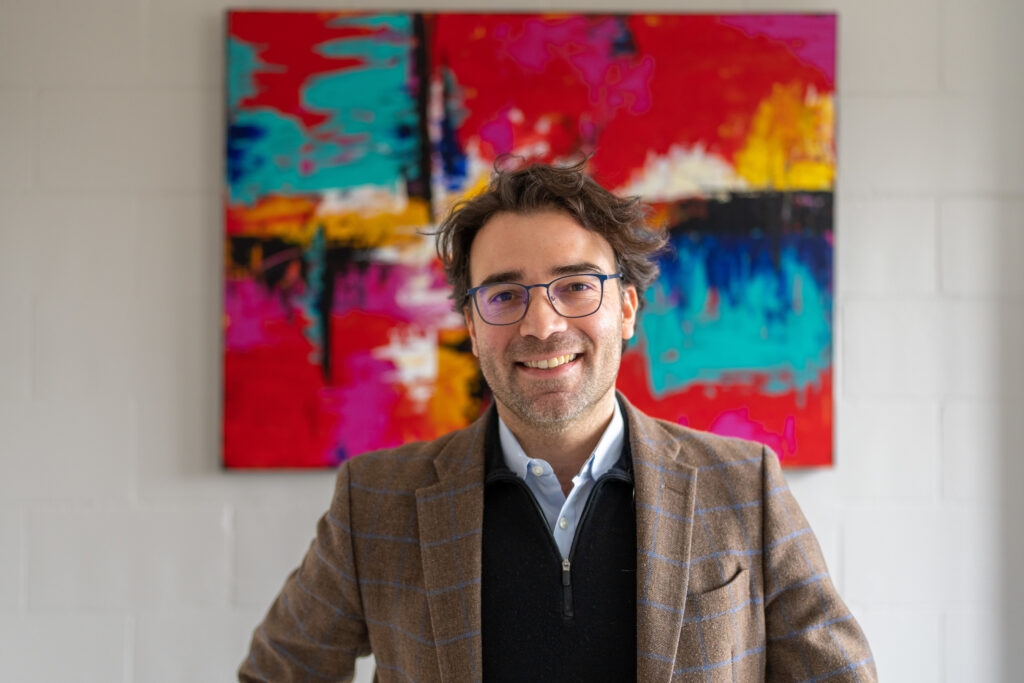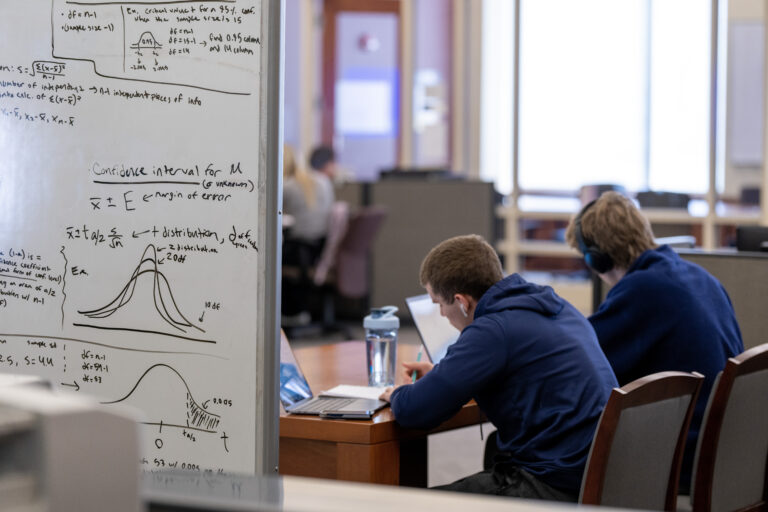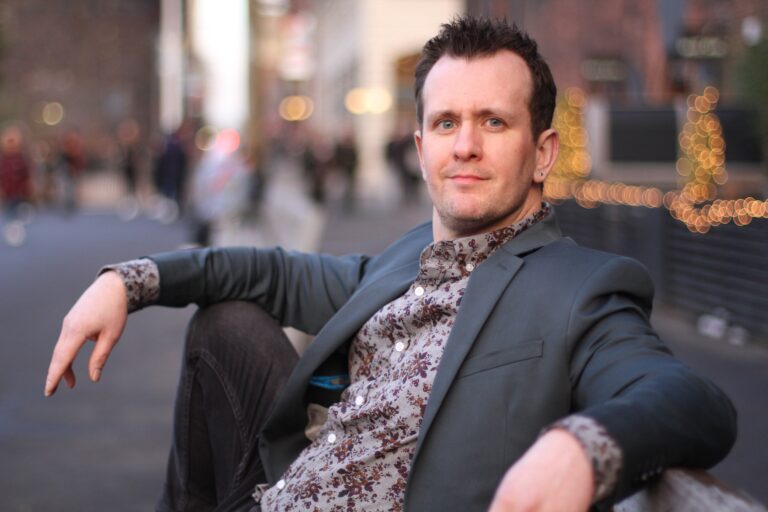This story is part of an interview series highlighting a wide range of educators at Marquette, started by Melissa Shew, associate director of Teaching Excellence, and Jennifer Maney, director of the Center for Teaching and Learning.
Hosted through the CTL, this interview series pays special attention to teaching as a profession and vocation at Marquette. All kinds of instructors and faculty will be profiled.
If you would like to recommend yourself or someone you know to be profiled in this series, please send an email with the person’s/people’s name to Shew or email ctl@marquette.edu with the subject line: CTL SPOTLIGHT SERIES. Please provide a brief description about the person (whether you or someone else). After consideration, the CTL will respond to work with the individual or team of educators.

Dr. Daniel Pinto, PT, DPT, PhD, OCS, FAAOMPT
Assistant professor, Department of Physical Therapy
Behavior, Engagement, & Technology Assessment (BETA) Lab
College of Health Sciences
Teaching at Marquette since fall 2017
What do you find rewarding about teaching?
When a student tells me they were able to help diagnose a family member and directs them to the right medical services after completing my class.
If they have retained the information to help their family members navigate the healthcare system, then they will be able to do so with their patients as well.
What do you find challenging about teaching?
I teach in a professional training program wherein I teach a course that emphasizes clinical decision-making under uncertain circumstances. This course is one of the first courses where there is only gray. There is no black and white. A person’s health complaint falls along a range of possible conditions with different probabilities tied to them. As we learn more from patients about their health complaint, the probabilities associated with the different conditions change. It is our job to match the patient’s presentation to the most likely condition.
I teach my students how to navigate these complexities to best diagnose and help patients in real-time.
The information we gather from a person can point us to conditions that need immediate medical management — it could be a matter of life or death for our patients. At the end of a clinical interaction, a practitioner must make an informed medical choice with limited information. This is very hard for new learners, who are often looking for certainty.
My challenge is to facilitate engagement with this difficult learning task by bringing often uncertain real-world scenarios to the classroom.
With students, I elevate the importance of screening for medical referral to highlight how much information can be captured from a brief interview and examination. For example, several years ago I called a friend who was slurring his speech on the phone, which was new for him. I asked what recently changed, and he mentioned having a bad case of the flu that has been running through his family, which finally got to him the day before. I asked if he noticed any other change. He mentioned feeling weaker, saying, “I could hardly turn the wheel of my car, I was so tired!” I prompted him to look in the mirror and smile, and he reported noticing that his smile “looked a bit different.” That reminded him to share that he was having some trouble focusing his eyes at times, and he noticed a slight loss in sensation in his hand. He noticed dropping his phone more. He believed these changes were due to being “hit hard” with the flu. In fact, his wife was in bed for a couple of days with the flu, so he felt he was faring better than her in comparison. He went to his medical doctor on the day his symptoms started, and he was treated for the flu.
By simply listening to his story, I was concerned about a very different cause to his symptoms. If it was the flu, it was certainly behaving strangely. He reported decreased sensation, decreased control of multiple muscle groups, and vision disturbance. I felt there was a high probability that he suffered a stroke, despite being only middle age and seeing his primary care physician for these very symptoms the day before. I suggested he go to the emergency department to get a workup. He was reluctant but heeded my advice and the diagnosis of a stroke was confirmed at the hospital hours later. I was not 100% certain he had a stroke, but I needed to act with the information that was available.
Understanding what information points to the need for medical referral and the urgency of a referral decision is the central topic of my class.

What do you hope students learn from your teaching?
Being curious is the key to understanding your patient. Most conditions follow a logical narrative. It helps to have a genuine interest in people and their stories in order to meet them at their needs. Where there are gaps in the story, fill them in. When the story or puzzle pieces do not fit, question why — don’t force a piece to fit. Be methodical when you need to be, and take strategic shortcuts when you can.
What advice would you give anyone else wanting to enter teaching in your field?
Professional programs in healthcare employ people who have built expertise in clinical practice and those who have built expertise in research.
You are often given a course to teach that aligns with your skill set, but are given little training in the methods of teaching and learning.
My advice to physical therapists and other clinicians who want to teach is to seek help from experts in teaching to improve your teaching! In fact, I suggest that no one do what I did, which was to try to tweak a course that is taught once a year, without the assistance of a teaching fellow like those from the Center for Teaching and Learning (CTL). I worked hard to create an interactive teaching environment and diverse assessment methods, but I was less aware of the need for strategic communication with the students. Managing the classroom expectations and social norms was something I had not considered. I am convinced I would have been tweaking content for several more years without significant improvements in the teaching experience for myself and learners had I not reached out to Melissa Shew at the CTL.

Non-astonishing teaching tip time! Please share one favorite thing you do in class or with your students that you think everyone should try. Limit yourself to three sentences.
For those who use group work, I suggest being deliberate about group formation, as suggested by using a team-based learning approach. I make purposeful groups based on criteria that I share with the students — a mix of past performance on a prerequisite course, a survey on decision-making tendencies, and a mix of how students say they like to receive information. I share with students that all groups are evenly balanced and bring a diverse skill set to the group learning. This helps learning within and between groups.
If you would like to recommend someone you know (or yourself) to be profiled in this series, email ctl@marquette.edu. Please provide a very brief description about the educator and/or why you think they should be highlighted. After consideration, the CTL will contact your nominee to start the interview process, which will entail the educator responding in writing briefly to different interview questions from a menu of choices.


